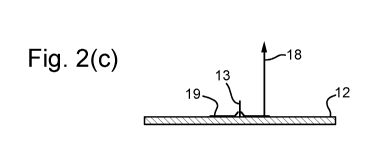Some of the information on this Web page has been provided by external sources. The Government of Canada is not responsible for the accuracy, reliability or currency of the information supplied by external sources. Users wishing to rely upon this information should consult directly with the source of the information. Content provided by external sources is not subject to official languages, privacy and accessibility requirements.
Any discrepancies in the text and image of the Claims and Abstract are due to differing posting times. Text of the Claims and Abstract are posted:
| (12) Patent Application: | (11) CA 3036456 |
|---|---|
| (54) English Title: | METHOD OF FASTENING A PANEL |
| (54) French Title: | PROCEDE DE FIXATION D'UN PANNEAU |
| Status: | Examination Requested |
| (51) International Patent Classification (IPC): |
|
|---|---|
| (72) Inventors : |
|
| (73) Owners : |
|
| (71) Applicants : |
|
| (74) Agent: | SMART & BIGGAR LP |
| (74) Associate agent: | |
| (45) Issued: | |
| (86) PCT Filing Date: | 2017-08-21 |
| (87) Open to Public Inspection: | 2018-03-22 |
| Examination requested: | 2022-04-22 |
| Availability of licence: | N/A |
| (25) Language of filing: | English |
| Patent Cooperation Treaty (PCT): | Yes |
|---|---|
| (86) PCT Filing Number: | PCT/GB2017/052467 |
| (87) International Publication Number: | WO2018/051060 |
| (85) National Entry: | 2019-03-11 |
| (30) Application Priority Data: | |||||||||
|---|---|---|---|---|---|---|---|---|---|
|
The invention relates to a method of fastening panels to a substrate, and a fastener, accordingly there is a method of fastening a panel to a substrate, comprising the steps of i. providing on the substrate a first projection, ii. attaching a fastener which comprises an elongate projection, to said first projection,wherein said fastener comprises an elongate projection, wherein the elongate projection is longer than said first projection, iii. attaching a panel onto said elongate projection.
L'invention concerne un procédé de fixation de panneaux sur un substrat, et un élément de fixation. Ainsi un procédé de fixation d'un panneau sur un substrat comprend les étapes consistant à i. disposer sur le substrat une première saillie, ii. fixer un élément de fixation qui comprend une saillie allongée, à ladite première saillie, ledit élément de fixation comprenant une saillie allongée, la saillie allongée étant plus longue que ladite première saillie, iii. fixer un panneau sur ladite saillie allongée.
Note: Claims are shown in the official language in which they were submitted.
Note: Descriptions are shown in the official language in which they were submitted.

For a clearer understanding of the status of the application/patent presented on this page, the site Disclaimer , as well as the definitions for Patent , Administrative Status , Maintenance Fee and Payment History should be consulted.
| Title | Date |
|---|---|
| Forecasted Issue Date | Unavailable |
| (86) PCT Filing Date | 2017-08-21 |
| (87) PCT Publication Date | 2018-03-22 |
| (85) National Entry | 2019-03-11 |
| Examination Requested | 2022-04-22 |
There is no abandonment history.
Last Payment of $210.51 was received on 2023-07-21
Upcoming maintenance fee amounts
| Description | Date | Amount |
|---|---|---|
| Next Payment if small entity fee | 2024-08-21 | $100.00 |
| Next Payment if standard fee | 2024-08-21 | $277.00 |
Note : If the full payment has not been received on or before the date indicated, a further fee may be required which may be one of the following
Patent fees are adjusted on the 1st of January every year. The amounts above are the current amounts if received by December 31 of the current year.
Please refer to the CIPO
Patent Fees
web page to see all current fee amounts.
| Fee Type | Anniversary Year | Due Date | Amount Paid | Paid Date |
|---|---|---|---|---|
| Application Fee | $400.00 | 2019-03-11 | ||
| Maintenance Fee - Application - New Act | 2 | 2019-08-21 | $100.00 | 2019-08-09 |
| Maintenance Fee - Application - New Act | 3 | 2020-08-21 | $100.00 | 2020-08-07 |
| Maintenance Fee - Application - New Act | 4 | 2021-08-23 | $100.00 | 2021-08-09 |
| Request for Examination | 2022-08-22 | $814.37 | 2022-04-22 | |
| Maintenance Fee - Application - New Act | 5 | 2022-08-22 | $203.59 | 2022-08-08 |
| Maintenance Fee - Application - New Act | 6 | 2023-08-21 | $210.51 | 2023-07-21 |
Note: Records showing the ownership history in alphabetical order.
| Current Owners on Record |
|---|
| BAE SYSTEMS PLC |
| Past Owners on Record |
|---|
| None |